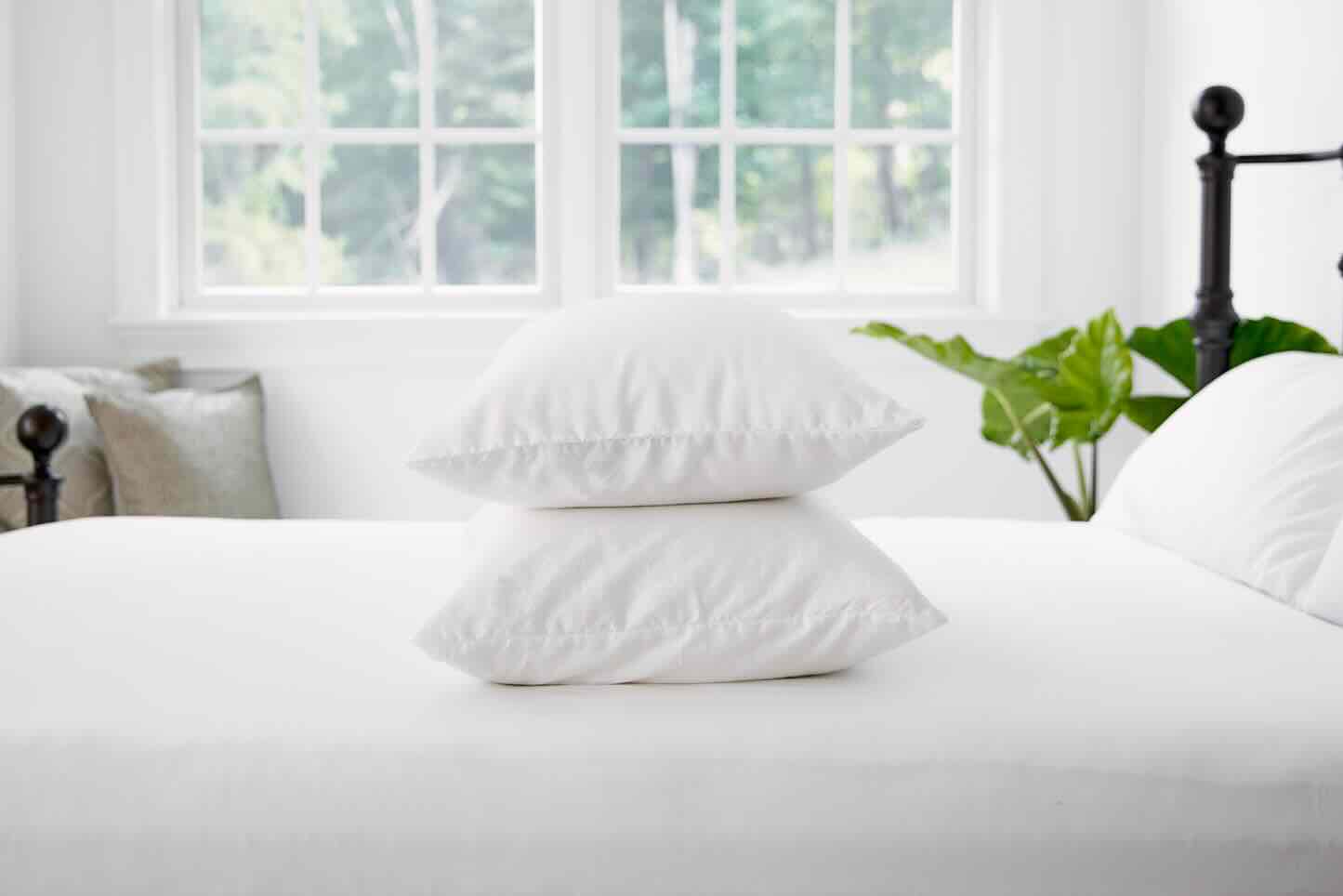

Articles
How To Make Pillows Smell Good
Modified: October 20, 2024
Discover effective tips and tricks in our articles to make your pillows smell good. Create a pleasant and refreshing ambiance in your home.
(Many of the links in this article redirect to a specific reviewed product. Your purchase of these products through affiliate links helps to generate commission for Storables.com, at no extra cost. Learn more)
Introduction
Pillows are an essential part of our daily lives, providing us with comfort and support while we sleep. However, over time, pillows can develop an unpleasant odor that can disrupt our sleep and make our entire sleeping environment less inviting. Nobody wants to rest their head on a smelly pillow!
Understanding why pillows start to smell is the first step to getting rid of the problem. There are several common causes of unpleasant odors in pillows, including sweat, body oils, dust mites, and mold. Fortunately, there are various strategies you can employ to make your pillows smell good again.
In this article, we will explore the reasons why pillows develop odors and provide you with practical tips on how to refresh and revitalize your pillows. By following these steps, you can ensure that your pillows remain fresh and enjoyable to use for a long time.
So, let’s dive in and discover how to make your pillows smell good once again!
Key Takeaways:
- Regularly washing and drying pillows, using scented laundry products, and incorporating natural fragrance sources are effective ways to keep pillows smelling fresh and inviting.
- Sunning and airing out pillows, proper storage, and avoiding common mistakes are essential for maintaining the cleanliness and pleasant aroma of pillows.
Read more: How To Make Toilet Smell Good
Why Do Pillows Start to Smell?
Pillows can start to smell due to a variety of reasons. Understanding these causes can help you address the issue more effectively and prevent it from recurring in the future. Here are some common reasons why pillows develop unpleasant odors:
- Accumulated Sweat and Body Oils: When we sleep, our bodies naturally release sweat and oils. Over time, these substances can build up on our pillows, creating an environment where bacteria and odor-causing microorganisms thrive.
- Dust Mites: Dust mites are tiny creatures that live in our bedding and feed on dead skin cells. These microscopic pests can contribute to the smell in pillows, as they produce waste products that have a distinct odor.
- Mold and Mildew: If pillows are exposed to moisture, whether from spills, excessive humidity, or improper storage, mold and mildew can start to grow. This can lead to a musty smell and potentially cause respiratory issues for individuals who are sensitive to mold.
- Poor Air Circulation: Pillows that do not receive proper air circulation can trap odors. This typically occurs when pillows are not dried thoroughly after washing or when they are stored in a closed container without ventilation.
Identifying the specific cause of the odor in your pillows can help you determine the most appropriate solutions to eliminate it. In the next sections, we will guide you through the process of assessing the freshness of your pillows and share tips on how to make them smell good once again.
Common Causes of Unpleasant Odors in Pillows
Unpleasant odors in pillows can stem from various sources. It’s important to identify these common causes in order to effectively eliminate the odor and prevent it from returning. Here are some of the most common causes of unpleasant smells in pillows:
- Sweat and Body Oils: During sleep, our bodies naturally produce sweat and oils that can seep into our pillows. Over time, this accumulation can lead to an unpleasant odor. The combination of sweat and body oils creates an ideal breeding ground for bacteria and other microorganisms.
- Dust Mites: Dust mites are microscopic pests that thrive in warm and humid environments. They feed on dead skin cells, and their waste can cause an unpleasant odor in pillows. Dust mites can be particularly problematic for individuals with allergies or asthma.
- Mold and Mildew: Pillows that are exposed to moisture can develop mold and mildew. This can occur if the pillow gets wet from spills, moisture in the air, or improper washing and drying techniques. Mold and mildew growth not only causes a foul odor but can also pose health risks.
- Improper Washing and Drying: If pillows are not properly washed and dried, they can retain moisture, leading to mold and mildew growth. Additionally, if the pillows are not completely dry before use, they can develop a musty smell.
- Environmental Factors: The surrounding environment can contribute to pillow odors. Factors such as smoking, pets, and nearby sources of strong odors can permeate into the pillows and cause them to smell unpleasant.
By understanding the common causes of unpleasant odors in pillows, you can take appropriate measures to prevent and eliminate them. In the following sections, we will discuss strategies to assess the freshness of your pillows and provide actionable steps to make them smell good again.
Assessing the Freshness of Your Pillows
Before diving into the methods to make your pillows smell good again, it’s important to assess their freshness. This will help you determine the extent of the odor problem and guide you in choosing the most appropriate solutions. Here are some simple steps to assess the freshness of your pillows:
- Sniff Test: Give your pillows a sniff to detect any unpleasant odors. If you notice a musty or stale smell, it’s a sign that your pillows need some refreshing.
- Visual Inspection: Examine your pillows for any visible stains, discoloration, or signs of mold or mildew. If you see any of these indications, it means that there is a problem with the freshness of your pillows.
- Consider Age: Take into account the age of your pillows. If they are old and have been used for several years, it’s likely that they have accumulated a significant amount of sweat, oils, and other substances that can contribute to unpleasant odors.
- Allergy Symptoms: Pay attention to any allergy symptoms you may experience when using your pillows. If you find yourself sneezing, experiencing congestion, or other allergy-related symptoms, it could indicate a buildup of dust mites or mold in your pillows.
- Ask for Others’ Opinions: Sometimes, we become accustomed to the smell of our pillows and may not notice any odor. Seek the opinions of family members or friends who might be able to provide a fresh perspective on the freshness of your pillows.
By following these assessment steps, you can get a clearer picture of the condition of your pillows and determine the best course of action to make them smell good again. In the next sections, we will share effective strategies for refreshing and revitalizing your pillows to eliminate unpleasant odors.
Steps to Make Pillows Smell Good
Now that you have assessed the freshness of your pillows and identified the causes of the unpleasant odors, it’s time to tackle the problem head-on. Follow these steps to make your pillows smell good again:
- Regular Washing and Drying: Start by checking the care label on your pillows for washing instructions. Most pillows can be machine washed and dried. Use a gentle cycle and mild detergent. Tumble dry on low heat or air-dry them if possible. Regular washing removes sweat, body oils, and dust mites, keeping your pillows fresh.
- Using Scented Laundry Products: Add a boost of freshness to your pillows by using scented laundry products. Choose a detergent and fabric softener with a pleasant fragrance. Avoid using products with strong perfumes that may irritate sensitive skin.
- Adding Natural Fragrance Sources: Enhance the scent of your pillows by incorporating natural fragrance sources. Place fresh lavender, dried herbs, or a sachet of potpourri inside the pillowcase. These natural scents add a pleasant aroma and help to mask any lingering odors.
- Employing Essential Oils: Essential oils are a popular and effective way to freshen up pillows. Add a few drops of your favorite essential oil to a spray bottle filled with water and lightly mist the pillow. Lavender, eucalyptus, and tea tree oil are known for their refreshing and antibacterial properties. Be cautious not to over-saturate the pillow.
- Using Fresheners and Odor Neutralizers: There are various fresheners and odor neutralizers available in the market specifically designed for pillows. These products come in the form of sprays, powders, or pellets. Follow the manufacturer’s instructions to eliminate odors and keep your pillows smelling fresh.
- Sunning and Airing Out the Pillows: Natural sunlight and fresh air can work wonders for eliminating odors. On a sunny day, remove the pillow covers and place the pillows outside in a well-ventilated area. The sun’s rays will help to kill bacteria and freshen the pillows. Let them air out for a few hours before bringing them back inside.
- Storing Pillows Properly: Proper storage is essential to prevent the build-up of odors. Keep your pillows in a cool, dry place with good ventilation. Avoid storing them in plastic bags, as this can trap moisture and lead to unpleasant smells. Instead, use breathable fabric pillow protectors to keep them clean and fresh.
- Avoiding Common Mistakes: Lastly, be mindful of common mistakes that can contribute to pillow odors. Avoid eating or drinking in bed to prevent spills and stains. Wash pillowcases and covers regularly to minimize the transfer of sweat and oils. Additionally, replace pillows every 1-2 years to maintain freshness and support.
By following these steps, you can effectively get rid of unpleasant odors and ensure that your pillows remain fresh, clean, and inviting. Remember to regularly assess and refresh your pillows to enjoy a restful and odor-free sleep.
Read more: How To Make A Patio Smell Good
Regular Washing and Drying
One of the most important steps to make your pillows smell good again is to regularly wash and dry them. Over time, pillows can accumulate sweat, body oils, dust mites, and other particles that contribute to unpleasant odors. Follow these guidelines for proper washing and drying:
- Check the Care Label: Before washing your pillows, check the care label for specific instructions. Different types of pillows may have different washing recommendations. Most pillows can be safely washed in the machine, but some delicate pillows may require hand washing.
- Prepare the Pillows: Remove the pillowcases and any pillow protectors or covers. If there are any stains on the pillows, pre-treat them with a stain remover or a mixture of baking soda and water. This will help to lift and remove any stubborn stains.
- Use a Mild Detergent: Choose a mild detergent specifically formulated for delicate fabrics. Avoid using bleach or harsh chemicals, as they can damage the pillows. If you prefer a scented detergent, choose one with a gentle fragrance that is suitable for sensitive skin.
- Load the Washing Machine: Place the pillows in the washing machine, ensuring there is enough space for water circulation. It is recommended to wash two pillows at a time to maintain balance in the machine. If you only have one pillow, balance it with towels or other lightweight items.
- Select the Right Wash Cycle: Set the washing machine to a gentle or delicate cycle with cold or warm water. Avoid using hot water, as it can damage the fabric and cause shrinkage. Additionally, choose an extra rinse cycle to ensure all detergent residue is thoroughly removed.
- Drying Your Pillows: Carefully remove the pillows from the washing machine and gently squeeze out excess water. Place them in the dryer with a couple of dryer balls or clean tennis balls. This helps to fluff the pillows and prevent clumping. Set the dryer to a low heat setting and dry the pillows completely.
- Additional Drying Methods: If the care label allows or if you prefer air-drying, you can also lay the pillows flat on a clean towel in a well-ventilated area. Make sure to flip them periodically to ensure even drying. Avoid direct sunlight, as prolonged exposure can cause discoloration.
- Fluffing and Testing: Once the pillows are completely dry, give them a gentle fluff to restore their shape and loft. Press the pillows to check for any lingering moisture. If they feel damp, continue drying them until they are completely dry to prevent mold and mildew growth.
Regular washing and drying are crucial to maintain the freshness and cleanliness of your pillows. Aim to wash your pillows every 3-6 months, or more frequently if necessary. By following these steps, you can eliminate sweat, body oils, dust mites, and other odor-causing substances, leaving your pillows smelling fresh and inviting.
Using Scented Laundry Products
To add a burst of fresh fragrance to your pillows, consider using scented laundry products. These products can help mask any lingering odors and leave your pillows smelling delightful. Follow these steps to infuse your pillows with a pleasant scent using scented laundry products:
- Select a Fragrant Detergent: Start by choosing a laundry detergent with a fragrance that appeals to you. There are numerous options available, ranging from floral scents like lavender or rose to fresh and clean scents like cotton or ocean breeze. Experiment with different fragrances to find the one you enjoy the most.
- Add Fabric Softener or Dryer Sheets: Fabric softener or dryer sheets are another excellent option to impart a pleasant scent to your pillows. When using fabric softener, carefully pour it into the designated compartment in your washing machine. Alternatively, if using dryer sheets, add one or two sheets to the dryer along with the pillows.
- Choose a Complementary Scent: If you already use scented laundry products for your beddings or pillowcases, it’s important to select a scent that complements them. This ensures that the overall scent of your pillows blends harmoniously with the rest of your bedding ensemble.
- Avoid Overloading with Fragrance: While scented laundry products can add a delightful fragrance to your pillows, it’s essential not to overload them with strong scents. Using too much detergent or fabric softener can leave a residue on the pillows, which may cause skin irritation or be overpowering in scent.
- Read the Instructions: Follow the instructions on the packaging of your chosen scented laundry products. They will provide dosing guidelines and other usage recommendations. Be sure to follow these instructions to achieve the desired results and avoid any potential issues.
- Consider Unscented Alternatives: If you or someone in your household is sensitive to fragrances or has allergies, consider using unscented laundry products instead. Unscented detergents and fabric softeners can still effectively clean and soften your pillows without adding any additional scent.
- Rotate Scents: To prevent your pillows from becoming accustomed to a particular scent, consider rotating the fragrances you use. This allows you to enjoy a variety of delightful scents and keeps your pillows smelling fresh and inviting.
By using scented laundry products, you can enhance the aroma of your pillows and create a more pleasant sleeping environment. However, remember to use these products in moderation and consider the preferences and sensitivities of everyone in your household. With the right choice of scented laundry products, your pillows will exude a pleasing fragrance that adds to your overall sleep experience.
To make pillows smell good, sprinkle baking soda on them, let it sit for 15 minutes, then vacuum it off. You can also add a few drops of essential oil to a spray bottle with water and lightly mist the pillows.
Adding Natural Fragrance Sources
If you prefer to embrace the beauty of nature, there are several natural fragrance sources that you can incorporate into your pillows to make them smell good. These sources not only provide an enchanting aroma but also add a touch of organic charm. Follow these steps to infuse your pillows with natural fragrances:
- Fresh Lavender: Lavender is known for its calming and soothing properties. Place a small pouch filled with dried lavender flowers inside your pillowcase. The gentle scent of lavender will help promote relaxation and create a serene sleeping environment.
- Dried Herbs: Take advantage of certain herbs known for their delightful scents. Dried herbs such as rosemary, chamomile, or mint can be added to a pouch and placed inside your pillow. These herbs release a subtle fragrance that can enhance your sleep experience.
- Sachets of Potpourri: Potpourri sachets or pillows filled with a mixture of dried flowers and aromatic botanicals are another wonderful option. Add a small sachet or pillow of potpourri to your pillowcase for a fragrant touch. This will add a hint of nature’s freshness to your pillows.
- DIY Herbal Mixtures: Experiment with creating your own herbal mixture for a personalized scent combination. Mix dried flowers, herbs, and spices such as rose petals, lavender buds, chamomile, and cinnamon sticks. Fill a small pouch and tuck it into your pillow. The unique blend will offer a personalized and refreshing aroma.
- Cedar Chips: Cedar chips not only emit a delightful woody scent but also act as a natural moth repellent, keeping your pillows fresh and protected. Place a small bag or sachet containing cedar chips inside your pillowcase to enjoy their aromatic benefits.
- Refreshing Citrus: Citrus fruits like oranges, lemons, and grapefruits have vibrant and invigorating scents. Peel a citrus fruit and place the peels inside your pillowcase. The zesty fragrance will add a refreshing twist to your pillows.
- Essential Oils: Essential oils extracted from various plants can be used to create customized scents for your pillows. Add a few drops of your favorite essential oil onto a cotton ball and tuck it inside your pillowcase. Popular options include lavender, eucalyptus, or chamomile essential oil.
- Rotate and Refresh: Periodically refresh the natural fragrance sources in your pillows to maintain their effectiveness. Replace dried herbs, potpourri sachets, or cotton balls with fresh ones every few weeks to ensure a continuous pleasant fragrance.
Adding natural fragrance sources to your pillows not only makes them smell good but also brings a touch of nature’s beauty into your sleep environment. Explore different options and find the scents that resonate with your senses. With these natural additions, your pillows will exude a refreshing aroma that enhances your sleep experience.
Employing Essential Oils
Essential oils are highly concentrated plant extracts that possess aromatic properties. These oils are a fantastic option to freshen your pillows and infuse them with delightful scents. Follow these steps to effectively employ essential oils for a pleasant fragrance:
- Choose Your Favorite Essential Oils: Select essential oils that appeal to your senses and promote relaxation. Lavender, chamomile, eucalyptus, and peppermint are popular options known for their calming and refreshing properties.
- Create a Diluted Essential Oil Spray: To use essential oils on pillows, it’s important to dilute them properly. Combine a few drops of your chosen essential oil with water in a small spray bottle. Shake well to mix the oils and water thoroughly.
- Lightly Mist the Pillow: Spray the diluted essential oil mixture lightly onto your pillow, ensuring even coverage. Avoid saturating the pillow, as excessive moisture can lead to mold and mildew growth. A gentle mist is sufficient to impart a pleasing scent.
- Focus on Pillow Areas: Concentrate on spraying the essential oil mixture on areas where you rest your head. This includes the center and edges of the pillow. Pay special attention to any specific areas that may have lingering odors.
- Allow Time to Dry: Give the pillow some time to dry before using it. Essential oils evaporate and provide a lasting fragrance, but allowing them to dry ensures that your pillow doesn’t feel damp and prevents any potential staining.
- Reapply as Needed: Over time, the scent of essential oils may fade. If you find that the aroma is no longer noticeable or has diminished, simply reapply the diluted essential oil spray to refresh the fragrance.
- Consider Personal Preferences and Sensitivities: Be mindful of any personal preferences or sensitivities to scents. Some individuals may find certain essential oils too strong or may have allergies. It’s important to choose oils that are pleasing and agreeable to you and those sharing the sleeping environment.
- Experiment with Blends: Don’t be afraid to experiment and create your own custom blends with different essential oils. Mixing different scents can result in unique aromas that suit your personal preferences. Start with a smaller amount of each oil and adjust the ratios until you achieve the desired fragrance.
- Store Essential Oils Properly: Essential oils should be stored in a cool, dark place to maintain their potency and fragrance. Ensure that the bottles are tightly sealed to prevent evaporation and contamination.
With the careful use of essential oils, you can infuse your pillows with captivating scents that promote relaxation and improve your sleep quality. Enjoy the therapeutic benefits and indulge in the soothing aroma as you rest your head on a pillow freshly scented with essential oils.
Read more: How To Make Feather Pillows Smell Better
Using Fresheners and Odor Neutralizers
If you’re looking for a quick and effective way to make your pillows smell good, using fresheners and odor neutralizers specifically designed for pillows can be a great option. These products help eliminate unpleasant odors and leave your pillows smelling fresh and inviting. Follow these steps to effectively use fresheners and odor neutralizers:
- Choose the Right Product: Look for fresheners or odor neutralizers that are specifically formulated for pillows. These products are designed to target and eliminate the odors commonly found in pillows, ensuring a fresh and clean scent.
- Read and Follow the Instructions: Familiarize yourself with the instructions provided by the manufacturer. Each freshener or odor neutralizer may have specific usage guidelines and recommendations for optimal results.
- Test in an Inconspicuous Area: Before applying the freshener or odor neutralizer to the entire pillow, test it in a small, inconspicuous area. This will help ensure that the product does not cause any adverse reactions or stains the fabric.
- Apply the Product: In most cases, you will need to spray the freshener or evenly distribute the odor neutralizer onto the surface of the pillows. Make sure to cover the entire pillow, focusing on areas where odors may be most prevalent.
- Allow Sufficient Drying Time: After applying the freshener or odor neutralizer, allow the pillows to dry completely. This will ensure that the product is fully absorbed and any residual moisture evaporates before using the pillows.
- Follow Recommended Frequency: Some fresheners and odor neutralizers may need to be reapplied regularly to maintain the desired scent. Refer to the instructions to determine how often the product should be used for the best results.
- Avoid Overuse: It’s important not to overuse fresheners or odor neutralizers, as excessive application may lead to a strong and overpowering scent. Follow the recommended quantity and frequency to maintain a pleasant and subtle fragrance.
- Consider Allergies and Sensitivities: Take into account any potential allergies or sensitivities to the ingredients in the product. If you or someone in your household has sensitivities, opt for fresheners or odor neutralizers that are hypoallergenic or specifically labeled as suitable for sensitive individuals.
- Combine with Other Methods: While fresheners and odor neutralizers can provide a quick fix, they are most effective when used in combination with other methods. Regular washing, drying, and incorporating natural fragrance sources can enhance the overall freshness of your pillows.
By using fresheners and odor neutralizers specifically designed for pillows, you can effortlessly eliminate unpleasant odors and enjoy the rejuvenating scent of freshly laundered pillows. Keep in mind that these products should be used in moderation and according to the manufacturer’s instructions to achieve the best results.
Sunning and Airing Out the Pillows
Sunning and airing out your pillows is a simple and effective method to eliminate odors and freshen them up naturally. Sunlight and fresh air not only help to remove unwanted smells but also kill bacteria and dust mites. Follow these steps to sun and air out your pillows:
- Choose a Sunny and Dry Day: Select a day when the weather is sunny, dry, and not overly humid. This will ensure that your pillows dry properly and do not retain any moisture that can contribute to mold or mildew growth.
- Remove Pillowcases and Covers: Take off the pillowcases and any pillow protectors or covers. Exposing the bare pillows to sunlight and fresh air allows for optimal cleaning and rejuvenation.
- Find a Suitable Outdoor Location: Identify a clean and flat surface outdoors where you can place your pillows. It could be a patio, balcony, or any other outdoor space where they can receive direct sunlight and fresh air.
- Arrange Pillows in a Single Layer: Lay the pillows in a single layer on the outdoor surface. Ensure that they are evenly spaced to allow air circulation and direct exposure to the sunlight.
- Rotate Periodically: Throughout the day, periodically rotate the pillows to ensure that all sides are evenly exposed to the sunlight. This will help provide an even distribution of heat and sunlight, promoting thorough cleaning and deodorizing.
- Allow Sufficient Time to Dry: Leave the pillows outside for several hours, ideally the entire day, to allow them to fully dry. The sunlight and fresh air will help evaporate moisture, eliminate odors, and provide a fresh scent.
- Beware of Fabric Fading: Be cautious of direct sunlight causing fading or discoloration, especially for colored or delicate fabric pillows. If you are concerned about this, you can cover the pillows with a clean white cloth or towel to minimize direct exposure.
- Take Precautions: Ensure that the outdoor space is clean and free from dirt or debris that could transfer onto the pillows. Protect them from pets or potential allergens during the airing-out process.
- Check for Dryness and Freshness: After sunning and airing out, check the pillows for dryness and freshness. Gently press on them to make sure they feel completely dry. Give them a sniff to see if any lingering odors are still present. If needed, you can repeat the process or use other methods to further freshen them, such as using fabric fresheners or essential oils.
Sunning and airing out your pillows is a natural and effective method to eliminate odors and revitalize them. Not only will they smell fresh and clean, but they will also benefit from the antibacterial properties of sunlight. By incorporating this simple step into your pillow care routine, you can enjoy a more pleasant and hygienic sleep experience.
Storing Pillows Properly
Proper storage is essential to preserve the freshness of your pillows and prevent them from developing odors. Whether you are storing pillows for a short period or during seasons of non-use, following these steps will ensure they remain in good condition:
- Clean the Pillows: Before storing your pillows, ensure they are clean by washing and drying them according to the manufacturer’s instructions. This step removes any dirt, sweat, or odors that may be present.
- Ensure Complete Dryness: Make sure the pillows are completely dry before storing them. Any residual moisture can lead to mold or mildew growth during storage. Allow ample time for thorough drying, either naturally or using a low heat setting in the dryer.
- Choose a Clean and Dry Storage Area: Select a storage area that is clean, dry, and well-ventilated. Avoid damp or humid spaces, as moisture can encourage the growth of mold and mildew. Ideal options include closets, shelves, or storage containers.
- Protect from Dust: Use protective covers or pillowcases to shield the pillows from dust and dirt during storage. Breathable fabric pillow protectors allow air circulation while keeping the pillows clean and fresh.
- Avoid Compression: Store your pillows in a way that minimizes compression. Squishing or compacting pillows for a long time can lead to loss of shape and support. Instead, store them in a manner that allows them to retain their natural loft and fluffiness.
- Avoid Plastic Bags: Resist the temptation to store pillows in plastic bags as they do not allow for proper air circulation, potentially trapping moisture and causing unpleasant odors. Opt for breathable fabric covers or pillow protectors instead.
- Prevent Pest Infestation: Protect your stored pillows from potential pest infestation by using repellent sachets or cedar chips. These natural substances can deter pests, such as moths, dust mites, or insects, from making your pillows their home.
- Store Pillows Upright: If possible, store your pillows upright, vertically or on their sides. This helps maintain their shape and prevents them from becoming compressed or misshapen over time.
- Reevaluate Stored Pillows Regularly: Periodically check stored pillows for any signs of mold, mildew, or musty odors. If you detect any issues, take immediate action to air out, clean, or replace the affected pillows.
- Replace Pillows as Needed: No matter how well you store your pillows, they will eventually wear out and lose their freshness. As a general guideline, consider replacing pillows every 1-2 years or when they no longer provide adequate support or develop persistent odors.
By following these storage guidelines, you can ensure that your pillows remain fresh, clean, and in good condition when not in use. Proper storage helps preserve their quality, so they are ready to provide comfort and a pleasant scent whenever you need them.
Avoiding Common Mistakes
When striving to make your pillows smell good, it’s important to be aware of common mistakes that can hinder your efforts. By avoiding these errors, you can ensure that your pillows stay fresh and inviting. Here are some common mistakes to avoid:
- Not Washing Pillows Regularly: Neglecting to wash your pillows regularly is a common mistake. Pillows accumulate sweat, body oils, dust mites, and other particles over time, leading to unpleasant odors. Aim to wash your pillows every 3-6 months, or more frequently if necessary.
- Using Excessive Heat: While it may be tempting to use high heat to dry pillows quickly, excessive heat can damage the fabrics and fillings. Always follow the manufacturer’s instructions regarding temperature settings for washing and drying your pillows.
- Overloading the Washing Machine: Overloading the washing machine with too many pillows can prevent proper cleaning and drying. Ensure there is enough space for the water to circulate and properly clean each pillow. If necessary, wash your pillows in multiple batches.
- Skipping the Pre-Treatment: Stains on pillows should be pre-treated before washing to ensure effective removal. Skipping this step may result in lingering odors or stains. Treat stains with a stain remover or a mixture of baking soda and water before washing the pillows.
- Using Harsh Cleaning Products: Avoid using harsh cleaning products, such as bleach or strong chemicals, on your pillows. These products can damage the fabric, affect the filling, and leave strong odors that may be difficult to eliminate.
- Using Strong-Scented Products: While scented laundry products can add a pleasant fragrance, using products with overpowering scents can be overwhelming, especially for individuals with sensitivities. Opt for products with lighter, more subtle fragrances.
- Overloading Pillowcases: Stuffing your pillows into pillowcases that are too small can lead to compression, affecting their shape and loftiness. Ensure that your pillowcases accommodate the size of your pillows and allow for easy insertion and removal.
- Not Allowing Sufficient Drying Time: Insufficient drying time can leave pillows damp, which may lead to mold or mildew growth and create a musty smell. Ensure that your pillows are completely dry before using or storing them.
- Storing Pillows in Plastic Bags: Storing pillows in plastic bags can trap moisture and lead to the growth of mold and mildew. Choose breathable fabric covers or pillow protectors for storage to allow for air circulation and prevent odors.
- Ignoring Allergies and Sensitivities: Consider the allergies and sensitivities of yourself and others in your household when selecting scented products or natural fragrances. Opt for hypoallergenic options or fragrance-free alternatives if needed.
By avoiding these common mistakes, you can maintain the freshness of your pillows and ensure a pleasant and inviting sleep experience. With proper care and attention, your pillows will continue to provide comfort and a delightful scent for a long time.
Read more: How To Make A Stinky Mattress Smell Good
Conclusion
Making your pillows smell good is essential for a comfortable and inviting sleep environment. Unpleasant odors can disrupt your sleep and impact the overall freshness of your bedding. By following the steps outlined in this article, you can effectively eliminate odors and revitalize your pillows, ensuring they remain fresh and delightful.
Regular washing and drying are key factors in maintaining the cleanliness and aroma of your pillows. Use scented laundry products or incorporate natural fragrance sources such as lavender or dried herbs to add a pleasant scent. Essential oils can be employed to create a customized and soothing aroma for your pillows.
Utilizing fresheners and odor neutralizers designed for pillows can provide a quick and effective solution to eliminate unwanted odors. Additionally, sunning and airing out your pillows harnesses the power of sunlight and fresh air to naturally eliminate odors and refresh them.
Proper storage of pillows plays a crucial role in preventing the build-up of odors. Ensuring pillows are completely clean and dry before storing them, using breathable covers or pillowcases, and storing them in a clean and well-ventilated area are essential practices to maintain their freshness.
Avoiding common mistakes, such as not washing pillows regularly, using excessive heat, and overloading the washing machine, will help preserve the quality and scent of your pillows. Pay attention to individual allergies and sensitivities to ensure a pleasant and comfortable experience for everyone.
In conclusion, with proper care and attention, your pillows can remain fresh, clean, and inviting. By incorporating these strategies and following the recommended steps, you can make your pillows smell good again, creating a soothing and refreshing sleep experience night after night.
Frequently Asked Questions about How To Make Pillows Smell Good
Was this page helpful?
At Storables.com, we guarantee accurate and reliable information. Our content, validated by Expert Board Contributors, is crafted following stringent Editorial Policies. We're committed to providing you with well-researched, expert-backed insights for all your informational needs.
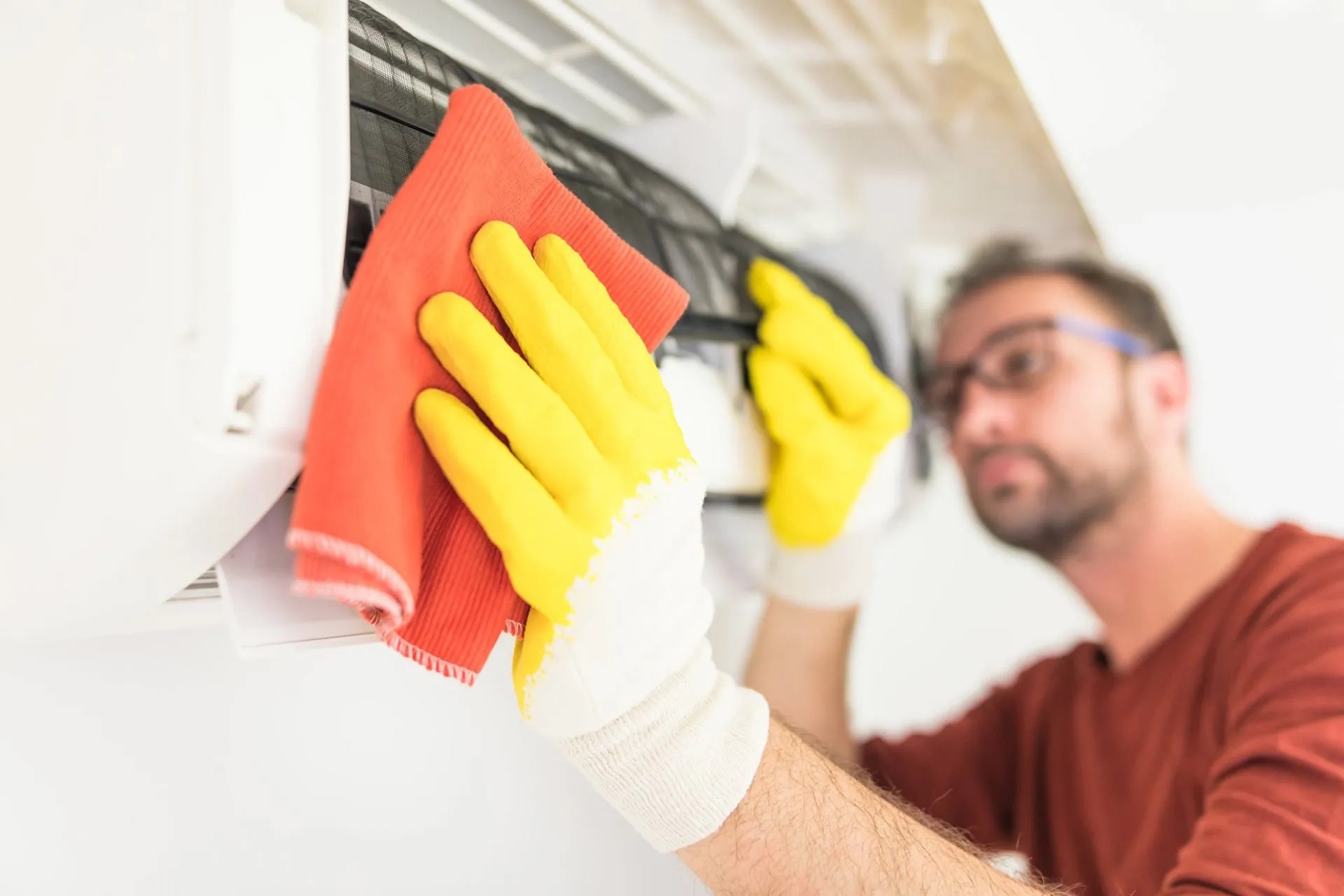


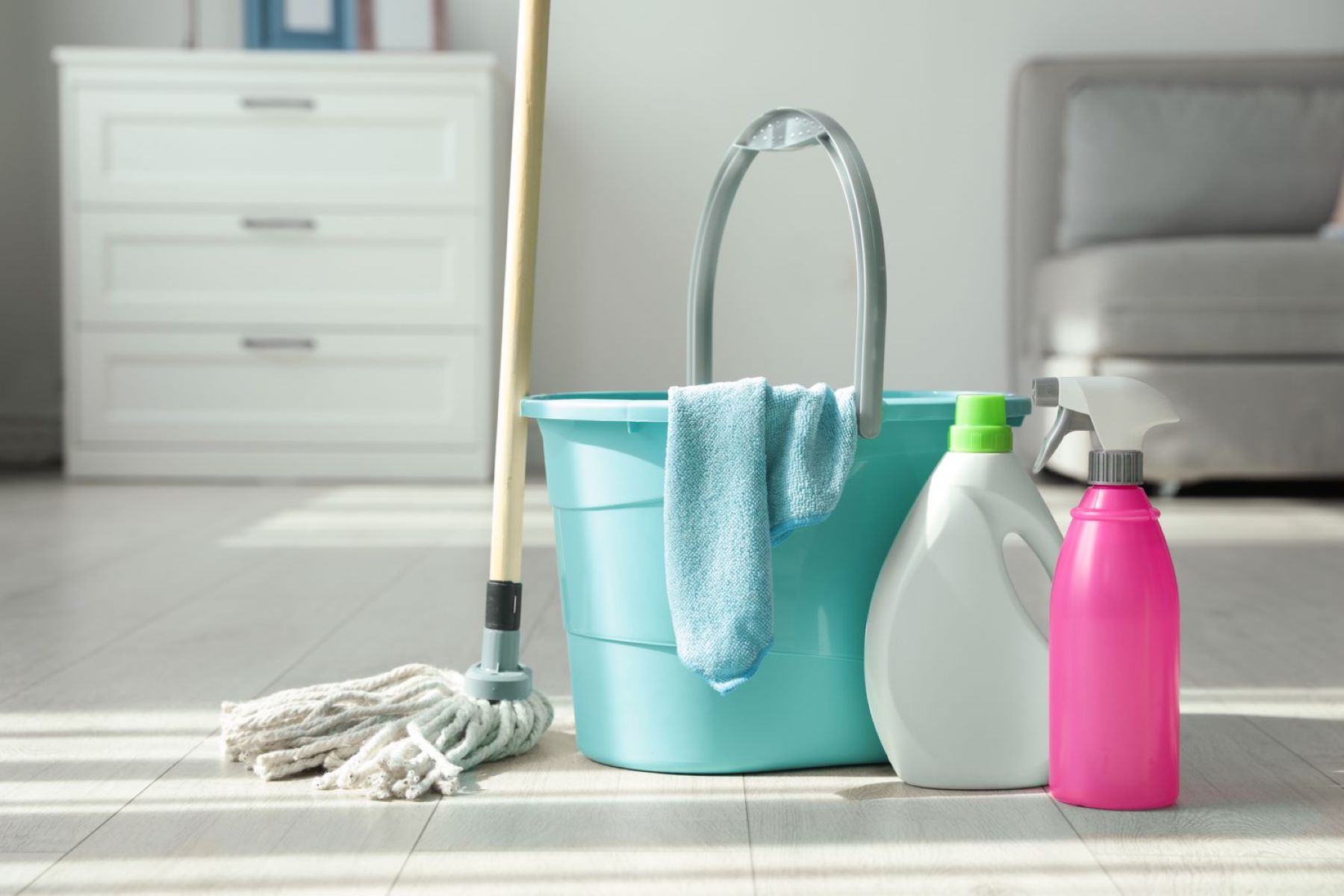
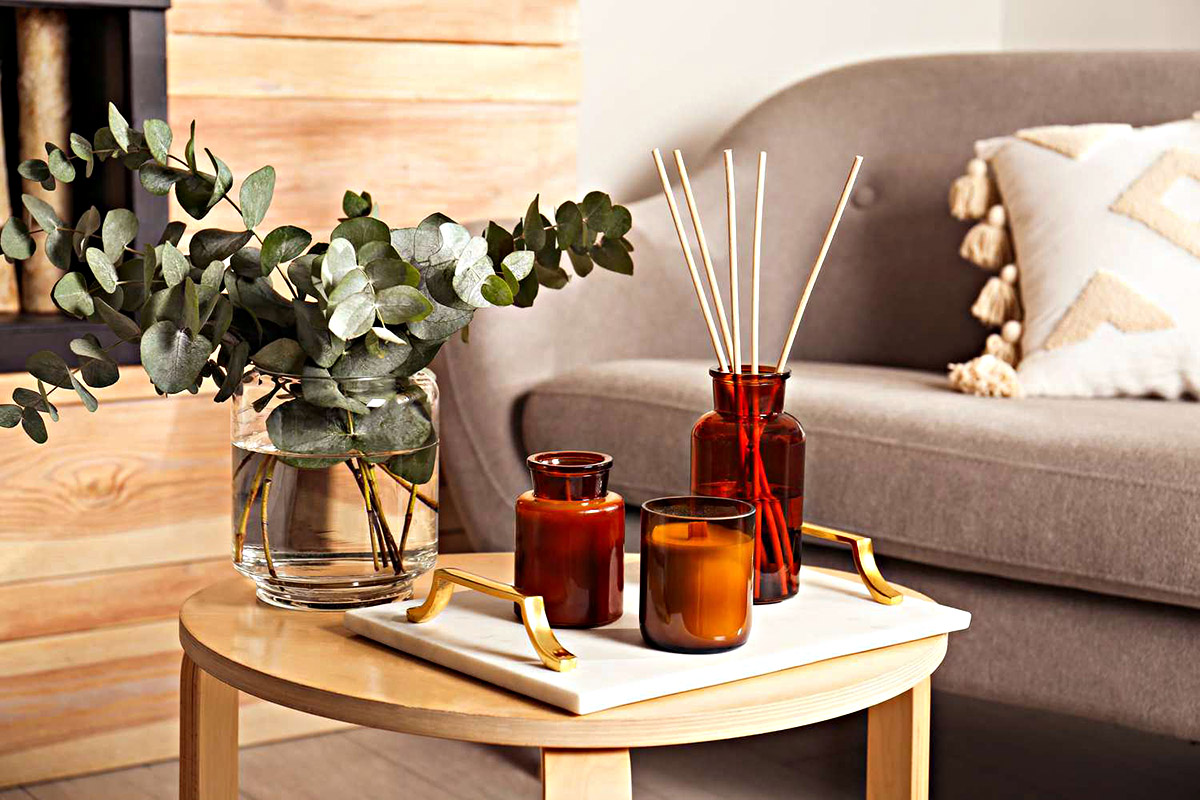
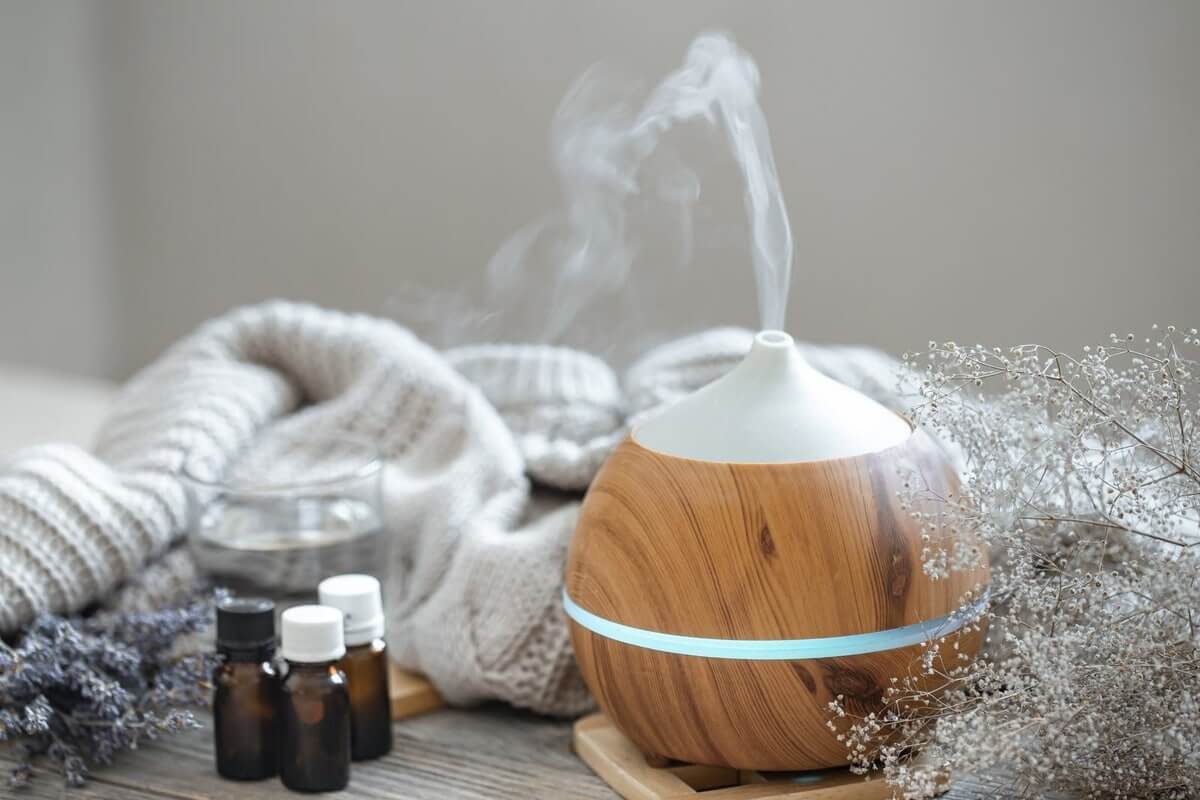
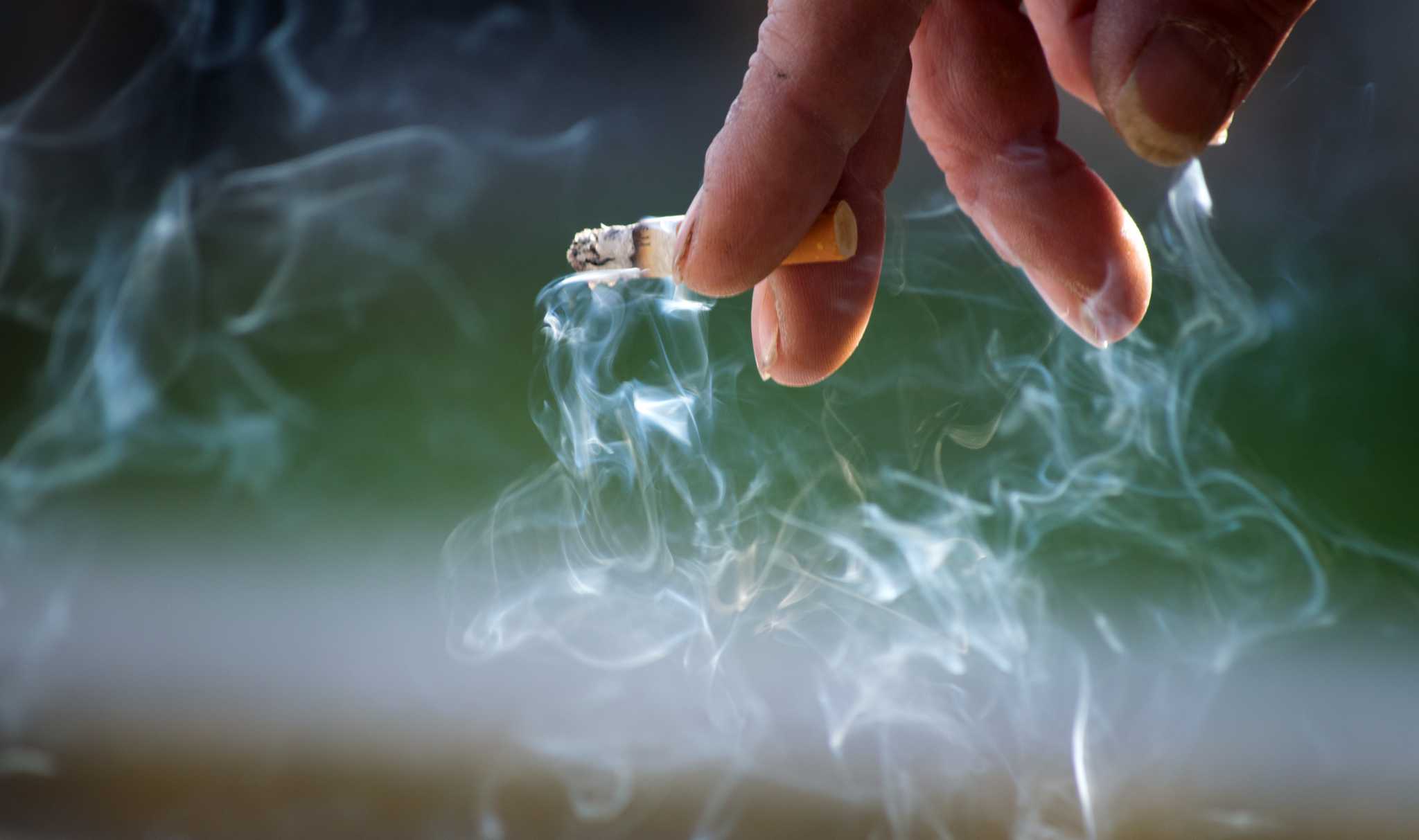
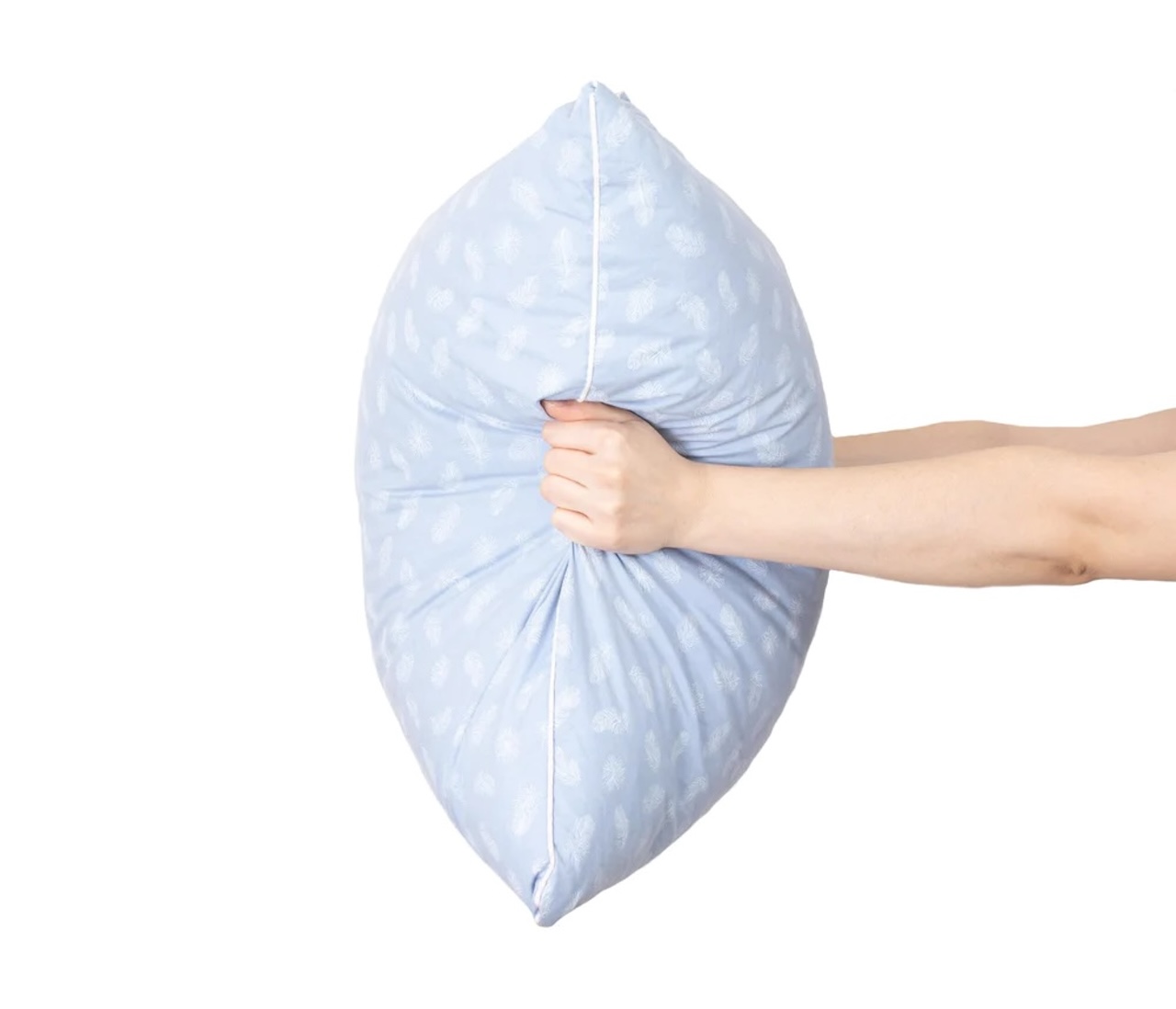

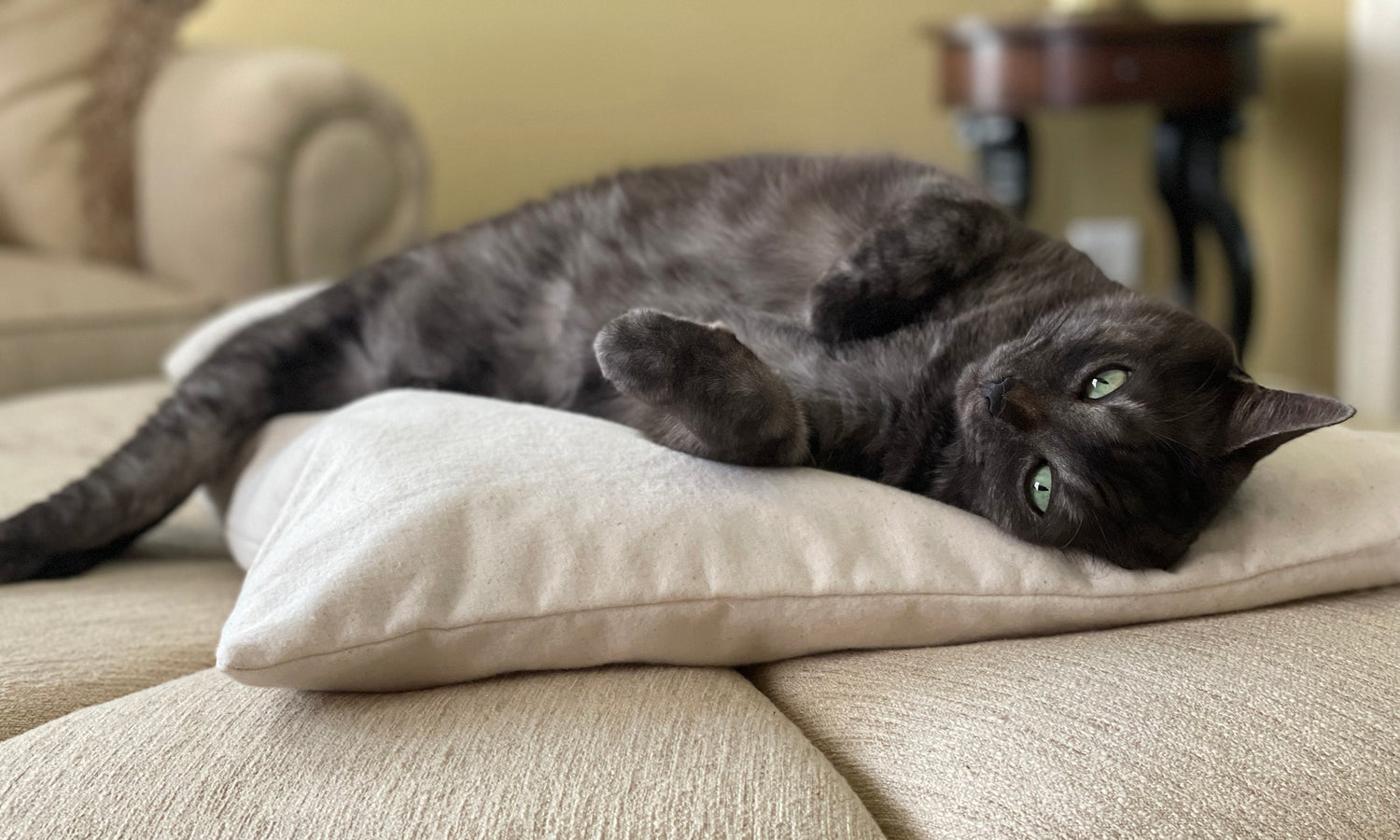
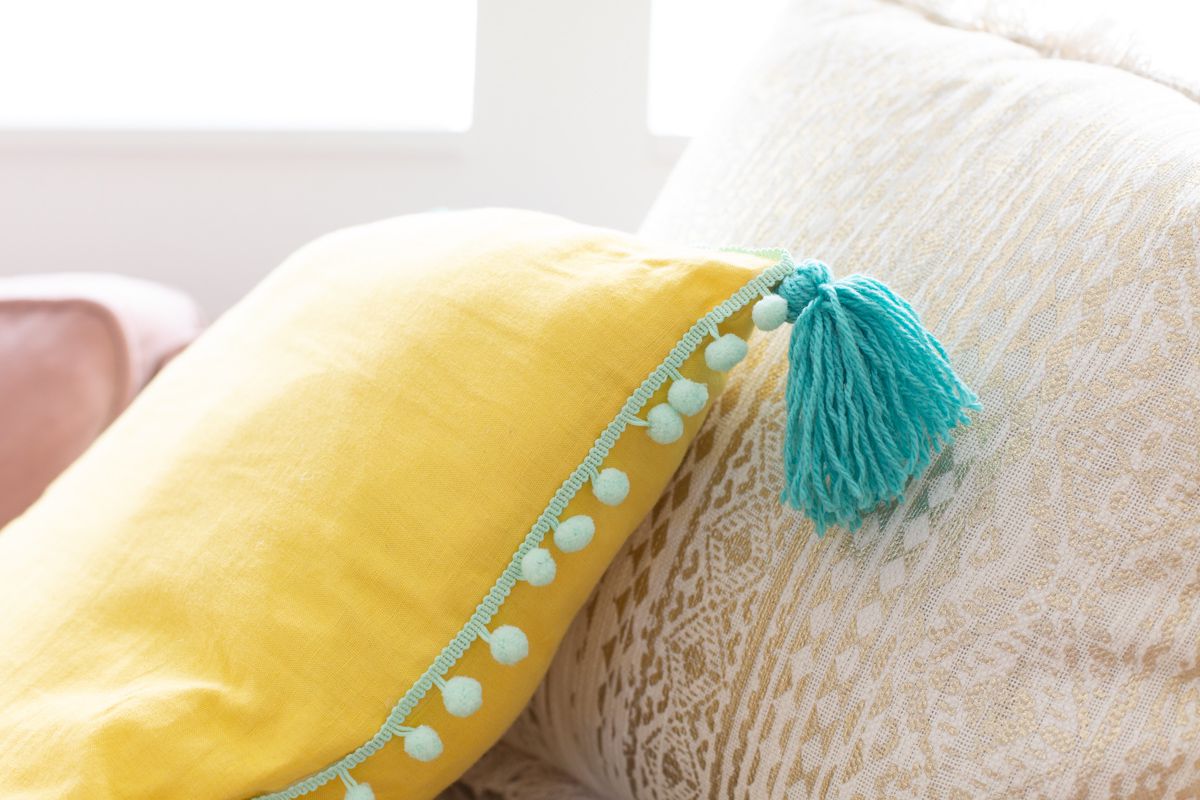
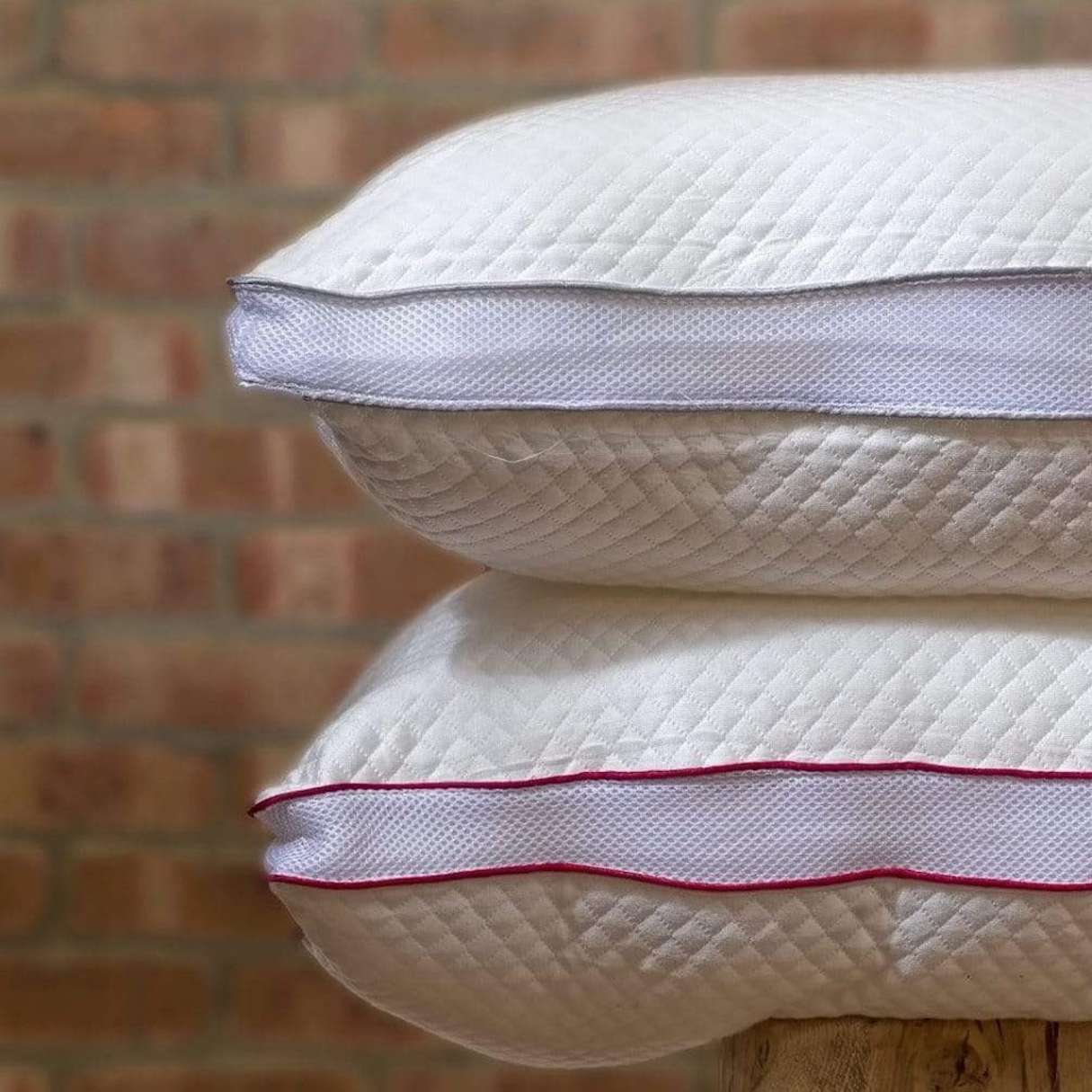

0 thoughts on “How To Make Pillows Smell Good”